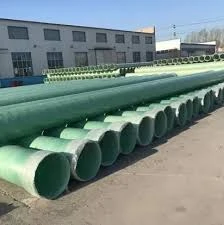
-
 Afrikaans
Afrikaans -
 Albanian
Albanian -
 Amharic
Amharic -
 Arabic
Arabic -
 Armenian
Armenian -
 Azerbaijani
Azerbaijani -
 Basque
Basque -
 Belarusian
Belarusian -
 Bengali
Bengali -
 Bosnian
Bosnian -
 Bulgarian
Bulgarian -
 Catalan
Catalan -
 Cebuano
Cebuano -
 China
China -
 China (Taiwan)
China (Taiwan) -
 Corsican
Corsican -
 Croatian
Croatian -
 Czech
Czech -
 Danish
Danish -
 Dutch
Dutch -
 English
English -
 Esperanto
Esperanto -
 Estonian
Estonian -
 Finnish
Finnish -
 French
French -
 Frisian
Frisian -
 Galician
Galician -
 Georgian
Georgian -
 German
German -
 Greek
Greek -
 Gujarati
Gujarati -
 Haitian Creole
Haitian Creole -
 hausa
hausa -
 hawaiian
hawaiian -
 Hebrew
Hebrew -
 Hindi
Hindi -
 Miao
Miao -
 Hungarian
Hungarian -
 Icelandic
Icelandic -
 igbo
igbo -
 Indonesian
Indonesian -
 irish
irish -
 Italian
Italian -
 Japanese
Japanese -
 Javanese
Javanese -
 Kannada
Kannada -
 kazakh
kazakh -
 Khmer
Khmer -
 Rwandese
Rwandese -
 Korean
Korean -
 Kurdish
Kurdish -
 Kyrgyz
Kyrgyz -
 Lao
Lao -
 Latin
Latin -
 Latvian
Latvian -
 Lithuanian
Lithuanian -
 Luxembourgish
Luxembourgish -
 Macedonian
Macedonian -
 Malgashi
Malgashi -
 Malay
Malay -
 Malayalam
Malayalam -
 Maltese
Maltese -
 Maori
Maori -
 Marathi
Marathi -
 Mongolian
Mongolian -
 Myanmar
Myanmar -
 Nepali
Nepali -
 Norwegian
Norwegian -
 Norwegian
Norwegian -
 Occitan
Occitan -
 Pashto
Pashto -
 Persian
Persian -
 Polish
Polish -
 Portuguese
Portuguese -
 Punjabi
Punjabi -
 Romanian
Romanian -
 Russian
Russian -
 Samoan
Samoan -
 Scottish Gaelic
Scottish Gaelic -
 Serbian
Serbian -
 Sesotho
Sesotho -
 Shona
Shona -
 Sindhi
Sindhi -
 Sinhala
Sinhala -
 Slovak
Slovak -
 Slovenian
Slovenian -
 Somali
Somali -
 Spanish
Spanish -
 Sundanese
Sundanese -
 Swahili
Swahili -
 Swedish
Swedish -
 Tagalog
Tagalog -
 Tajik
Tajik -
 Tamil
Tamil -
 Tatar
Tatar -
 Telugu
Telugu -
 Thai
Thai -
 Turkish
Turkish -
 Turkmen
Turkmen -
 Ukrainian
Ukrainian -
 Urdu
Urdu -
 Uighur
Uighur -
 Uzbek
Uzbek -
 Vietnamese
Vietnamese -
 Welsh
Welsh -
 Bantu
Bantu -
 Yiddish
Yiddish -
 Yoruba
Yoruba -
 Zulu
Zulu
frp customized fittings
Exploring FRP Customized Fittings Innovation in Fiber-Reinforced Polymer Applications
Fiber-Reinforced Polymer (FRP) has emerged as a revolutionary material in various industries due to its outstanding strength-to-weight ratio, corrosion resistance, and adaptability. One significant area where FRP is making waves is in the production of customized fittings. These tailored solutions provide an array of benefits that cater to specific applications, extending the versatility and efficiency of FRP components.
FRP fittings are used in a multitude of settings, from construction and infrastructure to marine and chemical processing industries. Unlike traditional materials such as metals and concrete, FRP offers numerous advantages, including reduced maintenance costs and enhanced longevity. The ability to customize these fittings means that they can be designed to meet unique project requirements, allowing for greater flexibility in application.
Exploring FRP Customized Fittings Innovation in Fiber-Reinforced Polymer Applications
Another significant advantage of FRP customized fittings is their lightweight nature. This characteristic simplifies transportation and installation, allowing for faster project completion. In industries where time is of the essence, such as construction, the lightweight aspect of FRP can significantly enhance logistical efficiency. Moreover, the reduced weight can ease the load on structural components, minimizing the need for additional support and thus saving on material costs.
frp customized fittings

Customization in design also plays a crucial role in enhancing the aesthetic appeal of projects. FRP fittings can be manufactured in various shapes, sizes, and colors, allowing them to blend seamlessly with the surrounding environment. This flexibility is particularly beneficial in architectural applications where visual coherence is essential. Whether it's a streamlining of ductwork in a commercial building or the structural supports of a bridge, the options for personalization have opened new creative avenues for designers and engineers alike.
The manufacturing process of FRP fittings is another factor that enhances its appeal. Advanced technologies, such as computer-aided design (CAD) and automated fiber placement, streamline the creation of customized components. This technological integration not only improves precision but also reduces lead times, enabling quicker turnarounds for projects that require immediate solutions.
As industries continue to embrace sustainable practices, FRP's inherent advantages also contribute to eco-friendliness. Utilizing FRP can reduce the carbon footprint of construction activities since it requires less energy to produce and install when compared to traditional materials. In an era where sustainability is paramount, FRP customized fittings represent a forward-thinking choice for companies looking to implement greener solutions.
In conclusion, FRP customized fittings stand at the forefront of innovation, providing tailored solutions that meet the diverse needs of various industries. Their corrosion resistance, lightweight properties, aesthetic versatility, and sustainability make them an attractive option for professionals seeking efficiency and longevity in their projects. As technology continues to advance, the potential applications for FRP fittings will only expand, solidifying their role as a critical component in the future of material engineering. Embracing these customized solutions not only enhances operational performance but also contributes to a more sustainable and visually appealing world.
Latest news
-
Exploring the Benefits of Top Hammer Drifter Rods for Enhanced Drilling PerformanceNewsJun.10,2025
-
High-Precision Fiberglass Winding Machine for GRP/FRP Pipe Production – Reliable & Efficient SolutionsNewsJun.10,2025
-
FRP Pipes & Fittings for Shipbuilding - Corrosion-Resistant & LightweightNewsJun.09,2025
-
Premium FRP Flooring Solutions Durable & Slip-ResistantNewsJun.09,2025
-
Premium Fiberglass Rectangular Tanks Durable & Lightweight SolutionNewsJun.09,2025
-
Tapered Drill String Design Guide Durable Performance & UsesNewsJun.09,2025









